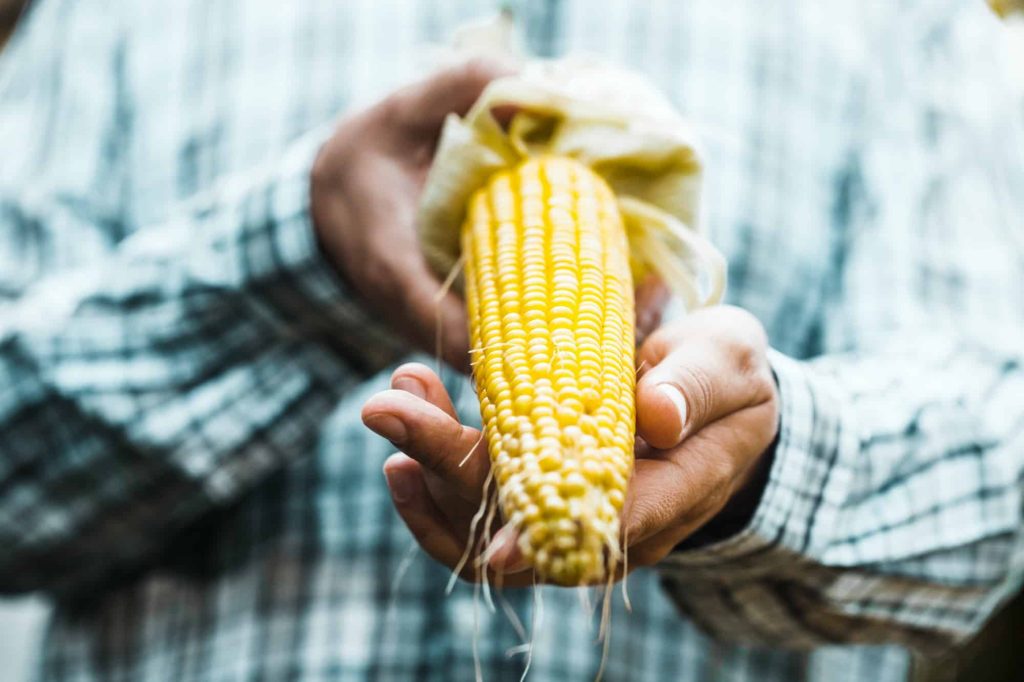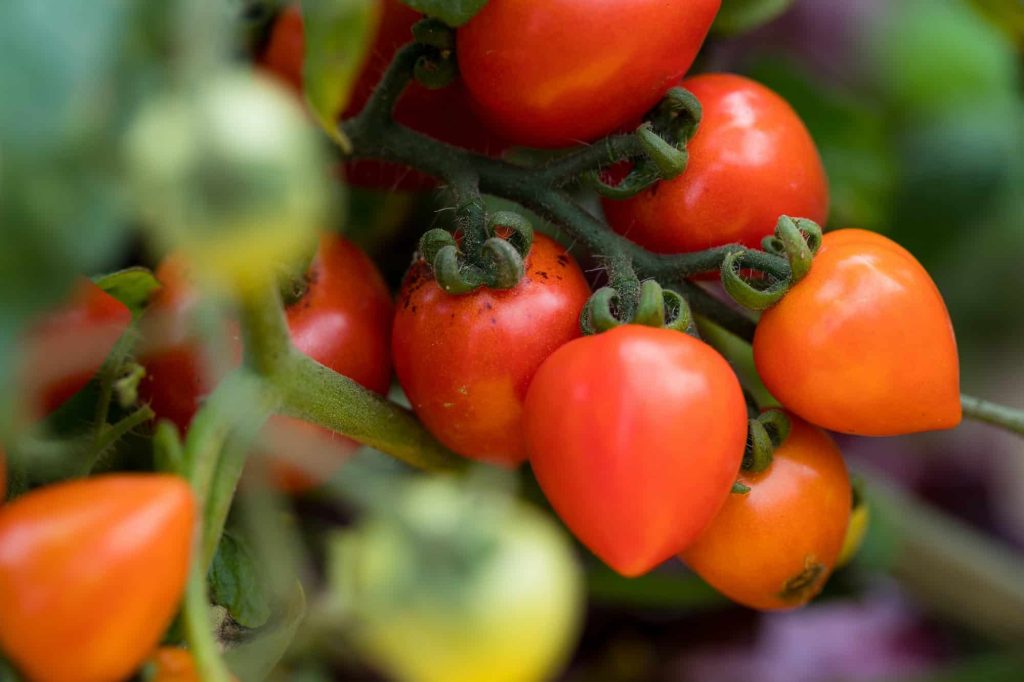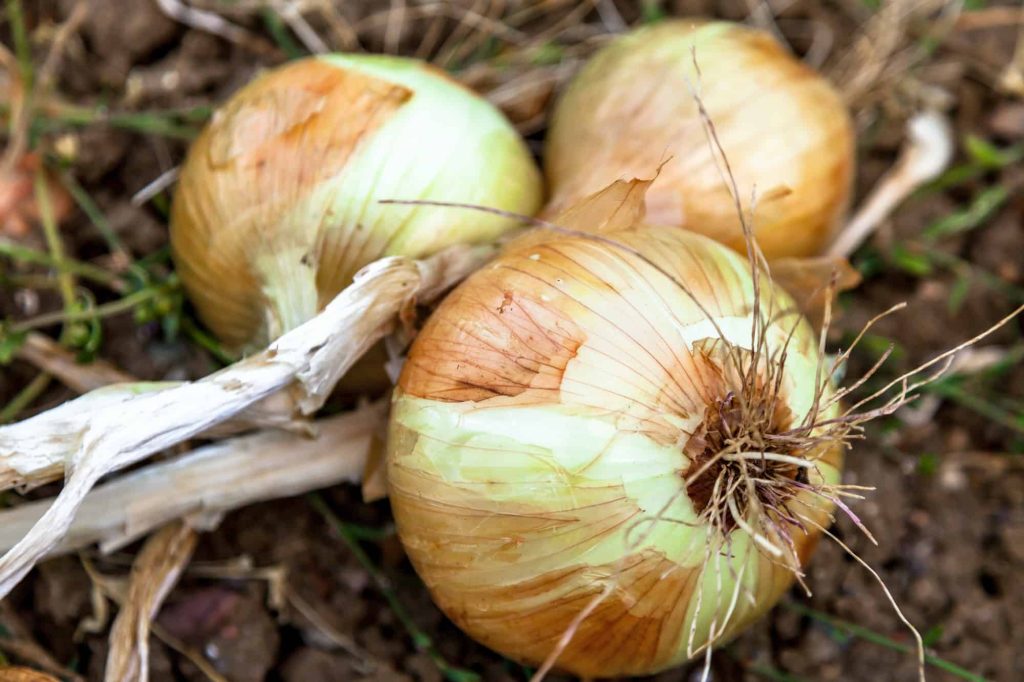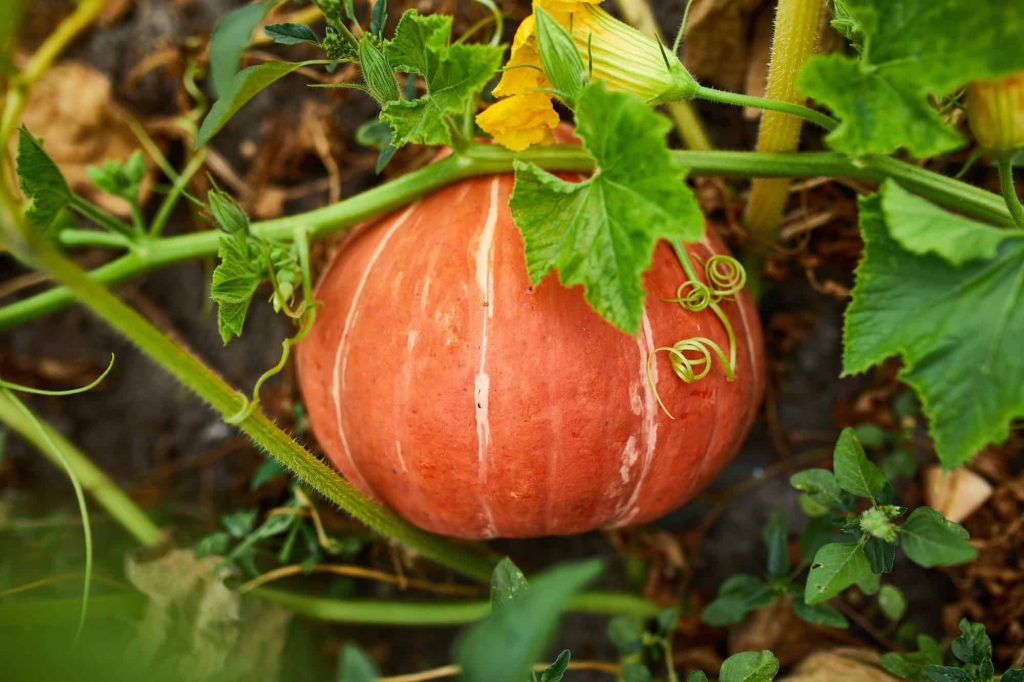Having a garden adorned with an orange color is a beautiful sight to behold. Pumpkins are annual plant vegetables that can give your patch an attractive look and still provide nourishment when eaten.
A garden with pumpkin plants that have been destroyed by pests will make the patch look very ugly. But with the best soil, temperature conditions, and suitable plants, you will have a successful harvest.
Some of the best companion plants to grow with pumpkins are borage, aromatic herbs, nasturtiums, corn, tomatoes, marigold, pea, lavender, radish, and Korean licorice mint. Pumpkins do get along nicely with most herbs and flowers. Pumpkins should not be planted near any root vegetables, vine plants, sunflowers, or watermelon.
To get the best out of your pumpkin, consider cultivating it with these companions mentioned in the previous paragraph. Plants are prone to attack from pests which is a major source of concern for gardeners after putting in so much work to produce better crop yields.
Companion planting will help to eliminate this problem. Just by cultivating some plants, you won’t need to make use of chemicals to kill pests and a disease-free plant will contribute to a better yield.
10 Best Pumpkin Companion Plants
Several pests can harm your pumpkin gourd. Some of them include bugs, and aphids and they can destroy your nutritious pumpkin while some plants will enhance its growth. Pumpkins need to be spaced to yield properly. You can grow some plants that will aid its growth in between these spaces.
Some of these plants benefit the pumpkins by keeping pests and diseases off of your plant.
1. Nasturtium
Planting nasturtium with your pumpkins has a lot of advantages and a few disadvantages but the disadvantages can be solved. This flower invites pollinators and predators that can feed on your pumpkin but the ladybug which is a lover of nasturtium feeds on those predators. That eliminates any form of danger for your pumpkins.
2. Aromatic Herbs
Herbs contain chemicals that aid the growth of some plants. They add nutrients to the plant and get rid of pests. There are types of Aromatic herbs
- Oregano is a cover crop/herb and invites insects that will feed on predators that can cause harm to the pumpkin
- Marjoram is a herb that enhances the flavor of the pumpkin
- Chamomile invites pollinators that help to pollinate the flowers
- Tansy keeps beetles far away and increases the amount of potassium in the soil.
- The fragrance of basil chases pests away from your pumpkin.
3. Corn

Corn can serve as an anchor for pumpkins. The pumpkin is a climbing plant and its stem needs a trellis to intertwine. Planting corn with your pumpkin will help it serve that purpose. Pumpkins contribute to the corn by providing it with moist soil and getting rid of weeds. The two make perfect companions.
4. Borage
Borage possesses beautiful flowers that invite pollinators to your pumpkin. These pollinators also prevent pests from coming close to your pumpkin.
5. Lavender
Have you ever seen lavender in a garden? Its purplish color gets you attracted to it. Don’t forget that flowers are a source of attraction for Pollinators. Bees will draw near and pollinate your pumpkin if you plant some lavender flowers with it. It also improves the flavor of your pumpkin so consider adding it to the list of plants you want to grow with your plant.
6. Marigolds
Aphids are a pain in the neck of most plants. They are enemies that will prevent your plant from blooming well. Marigold keeps these pests away from your pumpkin. It also gets rid of nematodes which are harmful to the roots of your plant. These pests are found in the soil but the way marigold destroys them is by improving the soil.
7. Tomatoes

Pumpkin has the same growing conditions as tomatoes which makes them a perfect companion. When planting tomatoes with pumpkin, ensure you space them 2 feet apart in order not to confuse them with each other.
8. Radish
Radishes serve as sacrificial lambs for pumpkins. Flea beetles are always after radish crops but instead of feeding on the pumpkin plant, they will rather feed on the Radish. It is used as bait to get rid of all these pests.
9. Korean Licorice Mint
Mint plants release a scent that repels pests and insects. They also attract pollinators but the best type of Mint plant recommended for pumpkins is Korean Licorice Mint. They improve the yield of your pumpkin and invite hoverflies that will feed on the harmful insects.
10. Pea
Cover crops are one of the best companion plants for any plant at all. Aside from the fact that they add some nitrogen to the soil. They enrich the soil and make it healthier for pumpkins to grow.
What Not to Plant with Pumpkins
Some plants will cause the death of your pumpkin. You sure want to have fun during Halloween, so you need your pumpkin to stay alive. Here are some plants that should never be found with your orange plant.
1. Brassica
Every gardener should know plants that belong to this family. Kales, cauliflower, and Kohlrabi all belong to this cabbage/Brassica family. They compete with crops for nutrients. The leaves and seeds of pumpkin contain some vitamins. You don’t want your plant to be deprived of these essential nutrients important to keep brassicas away from it.
2. Zucchini
This vegetable plays the same role as the brassicas. They will take up all the nutrients needed for your pumpkin to be healthy and leave it with nothing.
3. Watermelon
It will amaze you that zucchini and watermelons belong to the same family called “cucurbits”. These plants are heavy feeders and like zucchini, watermelons also compete for nutrients with your pumpkins. Cucumbers also belong to this family. They also attract similar pests. In short, keep cucurbits or heavy feeders away from your plant.
4. Fennel
If you want a great harvest of your pumpkin for Halloween, never plant it with fennels. Fennels cause your pumpkins to grow slowly. You don’t want to be left out when your friends are carving their pumpkins during Halloween.
5. Root vegetables

Crops with tubers and deep roots like potatoes, onions, and carrots are danger zones. Never plant them with your pumpkins as they can destroy their roots. They take up too much space and leave your pumpkin with little or no nutrients at all. Keep beets away from your plant because they are also deep-rooted crops.
6. Sunflower
Your pumpkin needs to be exposed to the sun for 6 hours a day. Sunflower just as the name implies is a lover of the sun and will prevent your pumpkin from getting enough sunlight. This, therefore, makes it a bad companion for your plant.
7. Vine plants
Grapes, peppers, and berries belong to this category. They could get confused by intertwining with your pumpkin because it’s also a crawling plant. An attempt to separate them can cause damage because of the resemblance between them.
Pumpkin companion planting guide
There are several guidelines to follow if you want to get the best out of your plant. Some of these guidelines include;
- Pumpkins do better in a warm environment. Make sure the patch you want to grow your pumpkin is warm before proceeding with the cultivation
- Sun is important for every plant and is more important for pumpkins. Ensure you expose your plant to the sun for 6-8 hours every day
- Make sure you space the plants to ensure they are proper growth
- Water your plants consistently as pumpkins need a lot of water to blossom
- Never cultivate the vine and deep-rooted plants with your pumpkins.
What vegetables grow well with pumpkins?
Cover crops will do your plant a lot of good. Planting beans coupled with corn will increase the yield of your pumpkin and serve as support.
Can I plant cucumbers with pumpkins?
Cucumber is a deep-rooted plant and it will hinder the growth of your pumpkin or cause severe damage to its root. Don’t plant cucumbers with it as they don’t go together.
How do you crossbreed a pumpkin?
To crossbreed a pumpkin plant, take two different breeds of pumpkins and use the flowers to cross-pollinate them. Let them mature and harvest the seeds for another cultivation.
How much space do pumpkins need?
One of the plants to avoid planting with your pumpkin is plants that will take up so much space. Pumpkins need a spacing of at least 2-5 feet apart to grow properly.
Do pumpkins need cross-pollination?
Cross-pollination isn’t compulsory. The pumpkin possesses flowers and all they need are beneficial insects that will pollinate the flowers.
Should I remove male pumpkin flowers?
Don’t get freaked when you notice that there are lots of male flowers blossoming, the female flowers will spring up later. The male flowers will be needed to pollinate the female flowers. So no you don’t need to remove the male flowers at all.
Do pumpkin plants come back every year?
Pumpkins are annual crops but you need to cultivate them every year after harvesting the last plant.
Conclusion
If you have never thought of planting your beautiful pumpkins with a companion, now is the time to try it and you will be glad about the harvest that you get.
That’s because pumpkins with companions always produce the best yield. So, explore with those companion plants now and get the best out of your pumpkin plants.
More on companion planting:

